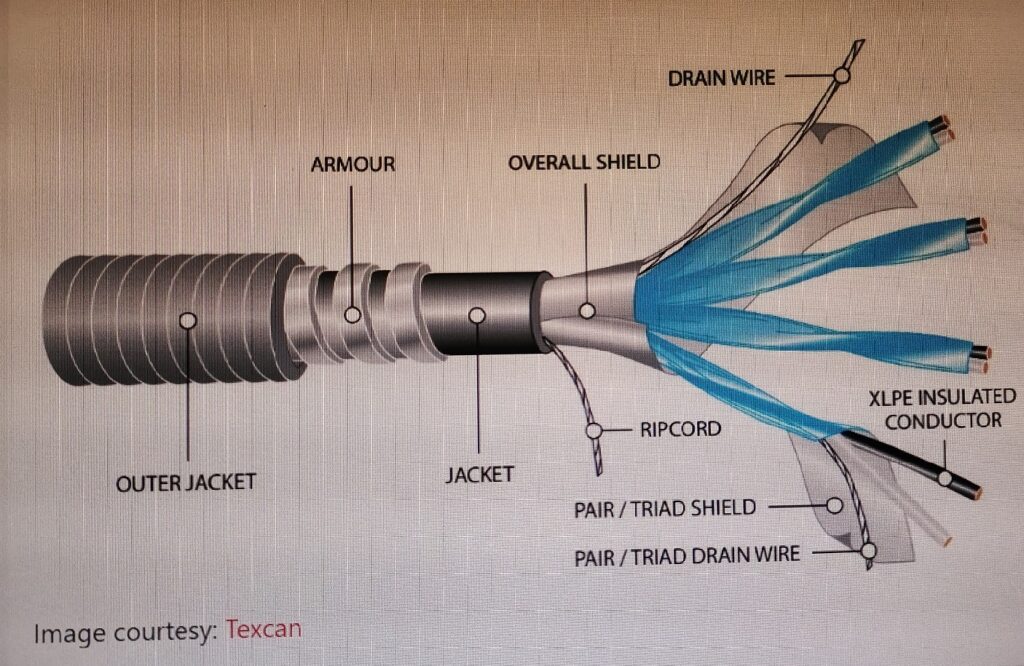Introduction:
In today's modern world, the demand for electricity is constantly increasing, driven by the rapid growth of technology and industrialization. As a result, efficient and reliable electrical power distribution has become crucial to meet this ever-increasing demand. One significant advancement in this field is the development and implementation of multi-core power cables. These cables, with their enhanced capabilities and features, have revolutionized the way electricity is distributed, ensuring improved efficiency and safety. This article explores the various aspects of multi-core power cables, including their construction, benefits, applications, and future prospects.
1. Understanding Multi-Core Power Cables:
1.1 Construction and Design:
Multi-core power cables consist of multiple insulated conductors bundled together within a protective outer sheath. Each conductor carries a separate current, allowing the cable to transmit multiple power signals simultaneously. The conductors are typically made of copper or aluminum, chosen for their excellent conductive properties.
1.2 Insulation and Sheathing:
The conductors in multi-core power cables are insulated with materials like PVC (Polyvinyl Chloride), XLPE (Cross-Linked Polyethylene), or EPR (Ethylene Propylene Rubber). These insulating materials provide electrical insulation, protecting the conductors from external influences and minimizing the risk of electrical leakage or short circuits. The outer sheath, generally made of PVC or LSZH (Low Smoke Zero Halogen), provides mechanical protection and resistance to environmental factors such as moisture, chemicals, and UV radiation.
2. Benefits of Multi-Core Power Cables:
2.1 Enhanced Efficiency:
By utilizing multiple conductors within a single cable, multi-core power cables enable the transmission of multiple power signals in a compact and organized manner. This reduces the overall cable count required for power distribution, resulting in optimized space utilization and simplified installation processes. Moreover, multi-core power cables offer better current-carrying capacity, reducing voltage drop and power losses over long distances.
2.2 Improved Safety:
Multi-core power cables incorporate advanced insulation materials and sheathing, providing excellent protection against electrical faults, fire, and environmental hazards. The use of quality insulating materials ensures proper electrical isolation, minimizing the risk of short circuits or electrical leakage. Additionally, the outer sheath materials used in these cables are designed to be flame-retardant, self-extinguishing, and low smoke emitting, ensuring the safety of people and property in the event of a fire.
2.3 Flexibility and Versatility:
Multi-core power cable s are available in various configurations, allowing flexibility in designing electrical power distribution systems. They can have different numbers of cores, ranging from two to hundreds, to meet specific requirements. This versatility makes multi-core power cables suitable for a wide range of applications, from residential and commercial buildings to industrial complexes and power plants.
3. Applications of Multi-Core Power Cables:
3.1 Building Infrastructure:
In building infrastructure, multi-core power cables are extensively used for internal and external power distribution. They are employed in electrical wiring systems to connect lighting fixtures, power outlets, HVAC systems, and other electrical equipment. The use of multi-core cables simplifies installation and reduces the overall cable footprint, making them an ideal choice for modern buildings with limited space.
3.2 Industrial Applications:
In industrial settings, multi-core power cables are indispensable for connecting heavy machinery, motors, and control systems. The use of multi-core cables ensures efficient power transmission, reducing energy losses and optimizing machinery performance. These cables are designed to withstand harsh operating conditions, including high temperatures, oil, and chemical exposure, making them suitable for various industries such as manufacturing, mining, and oil and gas.
3.3 Renewable Energy Systems:
With the growing emphasis on renewable energy sources, multi-core power cables play a crucial role in connecting solar panels, wind turbines, and energy storage systems to the electrical grid. They facilitate efficient power transmission from these renewable sources, ensuring optimal energy harnessing. The flexibility of multi-core cables allows for easy installation and integration into diverse renewable energy systems.
4. Future Prospects and Innovations:
The development of multi-core power cables is an ongoing process, driven by the need for more efficient and sustainable power distribution. Researchers and manufacturers are continually exploring innovative materials and designs to enhance the performance and capabilities of these cables. Some of the future prospects and innovations in multi-core power cables include:
4.1 High-Temperature Resistance:
Advancements in insulation materials aim to improve the cables' ability to withstand high temperatures, making them suitable for applications in extreme environments or industries with elevated operating temperatures.
4.2 Smart Grid Integration:
Integrating multi-core power cables with smart grid technologies enables real-time monitoring, control, and optimization of power distribution systems. This integration enhances energy efficiency, reliability, and fault detection capabilities.
4.3 Enhanced Fire Safety:
Researchers are focusing on developing fire-resistant materials for multi-core power cables, aiming to minimize the risk of fire propagation and improve overall fire safety in buildings and industrial facilities.
4.4 Eco-Friendly Materials:

The industry is exploring environmentally friendly alternatives to traditional insulation and sheathing materials, reducing the environmental impact of multi-core power cables during production, use, and disposal.
Conclusion:
Multi-core power cables have revolutionized the field of electrical power distribution, offering enhanced efficiency, improved safety, and versatility in various applications. Their construction, insulation, and sheathing materials ensure reliable and efficient power transmission while minimizing the risk of electrical faults and fire hazards. As technology advances, further innovations and improvements in multi-core power cables are expected, paving the way for a more sustainable and reliable electrical power distribution infrastructure in the future.
